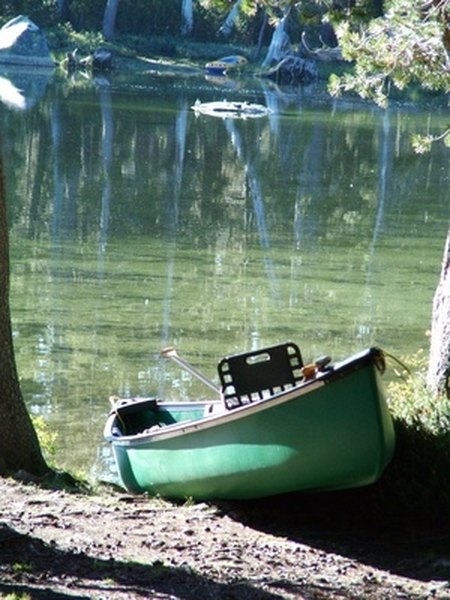
Plastic that is cracked, punctured or badly dented can be difficult to repair. Fortunately, modern plastics remember their shape, and if you apply heat with a hair dryer or a carefully applied torch to a fairly moderate dent, the hull should pop back into shape. For a temporary repair to keep water out until you paddle home, you can't go wrong with good old duct tape. To permanently repair a punctured or cracked hull, the only real cure is a plastic weld job.
Items you will need
Soap, water, bucket and rags
Plastic cleaning solvent
Dremel Moto-Tool with tear-shaped bit
KC Plastic Welder tool
Plastic welding rods
Sander with coarse, medium and fine grit sandpaper
Welding Plastic
Wash the hull around the damaged area with soap and water to remove dirt and grime, and then towel dry. Use plastic cleaner solvent to remove grease or other solvent soluble contaminants.
Align the edges if the boat is cracked. You can hold it in place by duct taping the damaged place from behind.
Widen the area to be repaired using the teardrop-shaped grinder head on a Dremel (r) Moto-Tool. Grind a smooth "V" down the length of the crack or smooth the edges around the hole so that the plastic weld will flow smoothly across the width of the repair. You can also do it with the angled point of the KC Welder (r), but it can be easy to burn through this way. The Dremel (r) is somewhat more controllable.
Lay a piece of the plastic welding rod of the appropriate thickness into the groove or an appropriately sized piece of plastic rod roughly the size of the hole.
Lay the tip of the plastic welder over the top of the plastic rod. Move the rod back and forth over the plastic welding rod until it heats to the melting point. Keep working, making smooth strokes, until the plastic melts smoothly into the surrounding plastic. Keep working until the heat from the welder tip heats the surrounding plastic. Use the tip of the welder to "stir" the melted rod with any melted hull plastic to give the plastic time to bond and cross-link. Give the rod time to intermix at the boundary area between the original plastic and the repair.
Allow the repaired area to cool. Use the sander to level and smooth the repaired area.
Warnings
- Wear safety glasses when working with the KC welder, sander and Dremel tool.
Tips
- Work slowly with the KC Welder, but be careful not to overheat the surrounding area and distort the hull.
- Overheating will weaken the hull. Underheating will not allow the repair to bond with the hull material
References
Tips
- Work slowly with the KC Welder, but be careful not to overheat the surrounding area and distort the hull.
- Overheating will weaken the hull. Underheating will not allow the repair to bond with the hull material
Warnings
- Wear safety glasses when working with the KC welder, sander and Dremel tool.
Writer Bio
Tom King published his first paid story in 1976. His book, "Going for the Green: An Insider's Guide to Raising Money With Charity Golf," was published in 2008. He received gold awards for screenwriting at the 1994 Worldfest Charleston and 1995 Worldfest Houston International Film Festivals. King holds a Bachelor of Arts in communications from Southwestern Adventist College.



